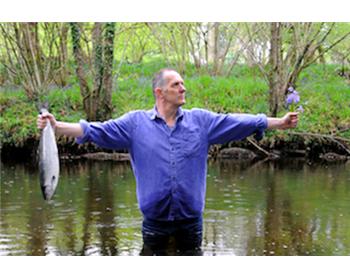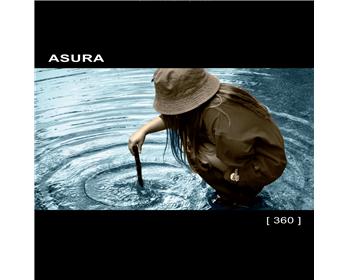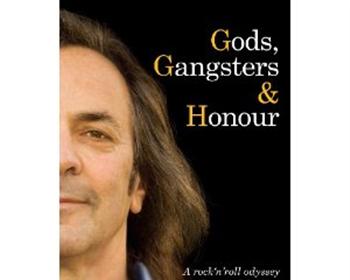If you’ve looked at my previous two articles on video games and pinball then you should by now be well on your way to converting that potential dead space/attic/garage/cellar into the games room you’ve always dreamed about.
You’ve got the vintage Namco Pac Man in its original livery set against the back wall in all its pill munching glory. By its side is a Bally Addams Family pinball currently keeping you up late at night with the lure of the silver ball and the challenge to beat the high score your neighbour keeps leaving you as a parting gift before his partner drags him home late at night.
Hey, you’ve even installed the mini bar with a pleasing array of spirits and a beer cooler just to give the room that added authenticity. Your ambition it seems knows no bounds. Yet it has to be said there is still a glaring omission in your quest for a recreated youth/recreational room (delete as appropriate).
You need some sounds.
Yes folks, without the presence of a jukebox there will always be a gap in your life…sorry room. But the question is where do you begin in your quest for what could be seen as one of the ultimate party accessories?
The juke box (“juke” being a derivative slang term for dance) has a history that stretches back in its most recognisable format to the 1930’s. Since that time it has evolved to play almost every format that music has made available. Starting with the venerable 78’s before moving on to the more popular 45’s in the 1950’s. The 1980’s saw the juke box evolve once again replacing the long standing vinyl with compact discs and essentially the first digital models. Nowadays the wheel of evolution has turned once again and the latest generation of players use digital files on hard drives akin to MP3’s, so in essence today’s juke boxes share more than a passing resemblance to the iPod in your pocket.
Arguably the most popular jukebox of all time is the Wurlitzer 1510, a design that became synonymous with American popular culture in the 1950’s. Instantly recognisable for it’s brightly coloured lengths of curved backlit glass (complete with bubble effect, hence its nickname the “Bubbler”) and its ornate wood front design. Prices for an original example of this model quickly move into somewhat exclusive realms. I spoke to Mike Murphy at Jukeboxes Direct (one of the UK’s largest suppliers of juke boxes for the home) and an original example can fetch around ?10,0000.
However there are alternatives, the 1015 has been reproduced over the years by a number of companies who have retained the original design yet updated the internal technology to accommodate both 7” singles (the original model played 78’s) and CD’s. These models retain the visual allure of the 40’s and 50’s models but with the improved sound quality inherent in today’s technology. Reproductions are available through companies such as Sound Leisure, NSM and Rock Ola. Although much has been made of the Wurlitzer throughout the juke box’s history other manufacturers have created machines of greater quality and arguably greater beauty. The Rock Ola models of the 50’s and 60’s moved towards a more robust chromed look while maintaining what is now seen as that valued retro appearance.
The newer machines from the 1970’s do drop in price, and increase in sound quality. Yet what you gain in these factors you lose in terms of aesthetics. While there is nothing wrong with the look of a 70’s juke box, don’t necessarily expect the swooping curves and vivid colours of its forebears. With these models you can often pick up a decent example for under ?1000. This price range also applies to some of the older CD jukeboxes on the market, the truth of the matter being that for now they simply lack the collectible value of their vinyl counterparts.
In terms of actual ownership many of the rules I mentioned in the pinball article apply here. Remember in some cases you will be picking up a piece of equipment that is in excess of forty years old. And once again this is a beast with many moving parts and over time these parts do inevitably wear out.
However on the plus side most of these boxes were designed to endure a hard working life often in unfavourable conditions and as a result they are built to last. A juke box in a home environment no matter what a music junkie you might think you are won’t receive the same amount of punishment it will have faced in a pub. So generally speaking they are a reliable investment. In terms of spares they are readily available for all but the rarest of models, however I would recommend that unless you are mechanically/electronically proficient to leave any maintenance work to someone with experience.
Many people who buy a jukebox do so with the intention of placing their valued record collection in them. Do bear in mind however if this is your aim then earlier models require singles to have the centres removed (or ‘dinked’ as it is called in the trade). It goes without saying that this devalues any potential worth a single might have so if it’s worth a bit of cash, keep it for the record player. All things considered the jukebox does provide an entertaining centrepiece for a home. After all there is nothing better than that dull thump of a tone arm touching down on aged vinyl and the crackle of the record leading in, kinda takes you back doesn’t it?


